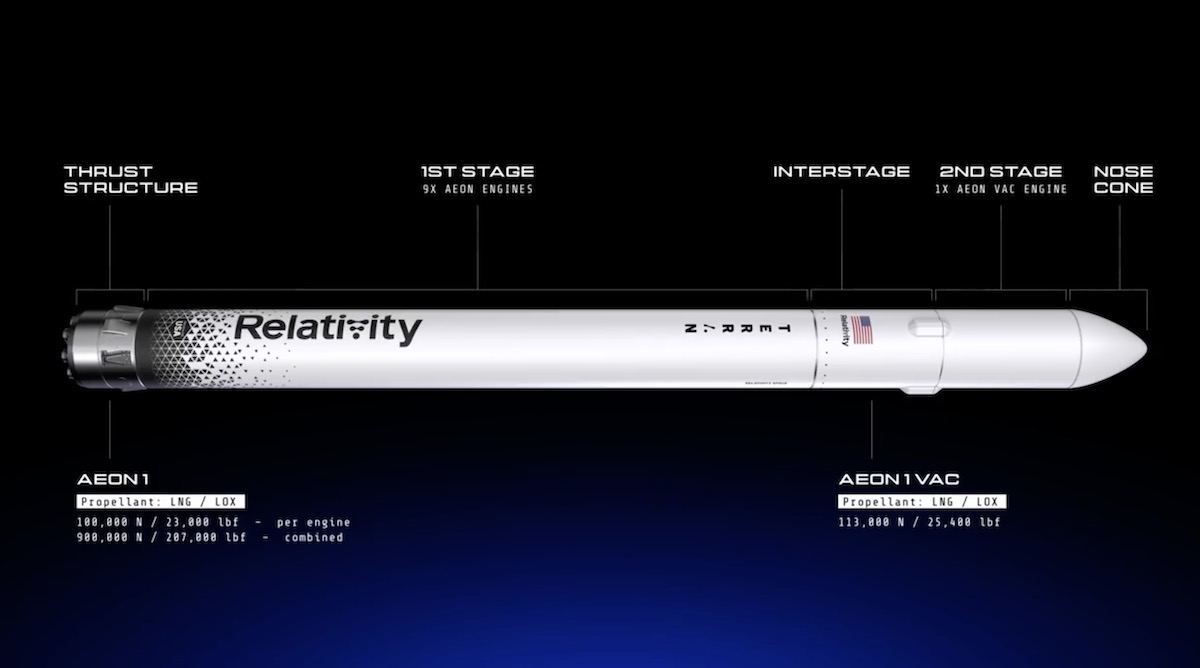Terran 1 is an expendable two-stage small-lift launch vehicle developed by the American aerospace manufacturing company Relativity Space. What is remarkable about the design of this rocket is that most of the parts are built with a 3D printer. Terran 1 consists of two stages. The first stage is powered by nine Aeon 1 engines burning methane and oxygen propellants in a gas-generator cycle. The second stage is powered by a single vacuum-optimized version of Aeon 1, known as AeonVac. Terran 1 is capable of up to 1,500 kg (3,300 lb) to low Earth orbit. The space company claims that they can reduce the part count in the vehicle by 100 times compared to traditionally-manufactured rockets and manufacture an entire flight article from raw materials in 60 days. Terran 1 is a prototype for a larger, fully reusable launch vehicle called Terran R. Relativity Space received a Federal Aviation Administration (FAA) launch license to conduct the first launch of its Terran 1 rocket, not-earlier-than (NET) March 2023 from Cape Canaveral Space Force Station's Launch Complex 16.
Terran 1
 |
Name: | Terran 1 |
| Manufacturer: | Relativity Space | |
| Height: | 35.2 m / 115 ft | |
| Diameter: | 2.3 m / 7 ft | |
| Mass: | ? ton / ? lb | |
| Capacity: |
|
|
| Stages: | 2 | |
| Engines first stage: | 9 x Aeon 1 (methane & LOX) | |
| Engines second stage: | 1 x Aeon R (methane & LOX) | |
| Cost per launch: | $12 million | |
| Launch sites: |
|
|
| First launch: | 2023 | |
| Launches: |


